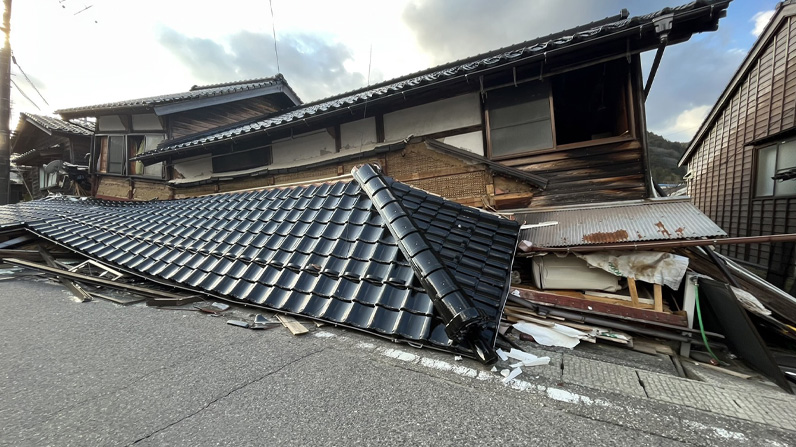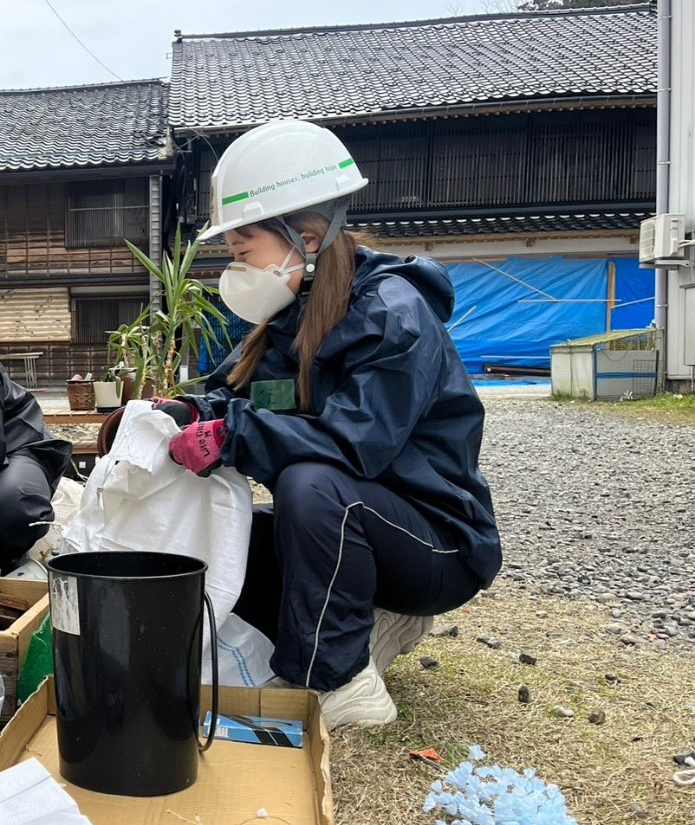Japan is a country that experiences many earthquakes. How the country is dealing with loss of urban farmlands remains a challenge.
According to the Japan Meteorological Agency (2024)1, approximately 200 major earthquakes have occurred in Japan since 1996. In recent years, major earthquakes in Japan include the 2011 earthquake off the Pacific coast of Tohoku, the 2016 Kumamoto earthquake and the 2024 Noto Peninsula earthquake. According to NHK (2024)2, the 2024 Noto Peninsula earthquake caused extensive damage including collapsed buildings, fires, tsunamis, landslides and liquefaction.
The Ministry of the Environment (2017)3 states that ‘Japan has many typhoons and earthquakes, and landslides are more likely to occur due to topographical and meteorological conditions’. It is important to note that Japan is an area prone to earthquakes.
It is feared that, at any time, an earthquake with an estimated magnitude of 7 may directly affect the Tokyo metropolitan area. Due to the concentrated population, if an earthquake was to hit Tokyo, the Government of Japan estimates that there would be many casualties and millions of people would be left stranded. There is concern that an earthquake hitting the Tokyo metropolitan area will be in areas with large numbers of wooden houses and major damage is expected due to buildings collapsing or burning. As a result, there is an urgent need to improve preparedness for major earthquakes. This is particularly important in areas with a high concentration of wooden houses.
Characteristics of Tokyo and disaster predictions
The Tokyo metropolitan area is the political and economic centre of Japan and comprises Tokyo23city and 39Municipality. The region includes mountains, hills and plateaus. It is characterised by topography ranging from lowlands below 4 metres above sea level to mountains 2,000 metres above sea level. It is also home to the volcanic Izu Islands and Ogasawara Islands in the Pacific Ocean. From the post-war reconstruction period to that of high economic growth, urbanisation progressed rapidly without the construction of adequate urban infrastructure, resulting in densely wooded-buildings areas. There is also a lack of urban infrastructure such as roads and parks and areas are at a high risk from earthquakes and fires due to many ageing wooden buildings.
Prediction and prevention measures
The large-scale fire that occurred in Itoigawa City, Niigata Prefecture in 2016 reminded us of the importance of fire-proofing urban areas. There needs to be effective measures to make these urbanised areas resistant to fire and earthquake and there is an urgent need to increase preparedness for major earthquakes.
The Tokyo Metropolitan Government (2021)4 is building a disaster-resilient city based on significant criteria:
- Formation of fire-spread barrier zones to prevent large-scale urban fires.
- Securing functionality of emergency transportation roads to create an urban disaster prevention network that allows for smooth rescue operations and evacuations.
- Creating safe and high-quality urban areas to improve disaster prevention according to local conditions by improving infrastructure such as disaster prevention roads, making buildings fire-proof and earthquake resistant and creating safe, high-quality urban areas.
- Securing evacuation sites to properly secure evacuation sites to protect residents from large-scale urban fires.

In 2024, the earthquake on the Noto Peninsula caused extensive damage and collapsed buildings.
Image: Sae Nishi
According to the Ministry of Agriculture, Forestry and Fisheries (2024)5:
Urban agriculture plays a variety of roles, such as supplying fresh agricultural products by taking advantage of its proximity to consumption areas, providing a place to experience farming, securing open space in case of disasters and providing green spaces that provide peace and moisture.
One of the roles of urban agriculture is to secure disaster prevention spaces in the event of a disaster. However, according to the Tokyo Metropolitan Government (2020):
As of 2021, the agricultural land area of Tokyo is 6,410 ha, which is equivalent to 2.9% of the total area of Tokyo. Of this, 73.8% is fields, 22.6% is orchard land and 3.5% is rice paddies. In the 10 years since 2011, 1,190 ha (decrease rate of 15.6%) has been lost.
This shows that the amount of urban farmland contributing to ‘evacuation areas and fire prevention zones’ is decreasing. Also, according to the Tokyo Metropolitan Government (2020)6:
Looking at trends in the composition ratio of agricultural workers by age, the proportion of people aged 60 and over has reached 68.8% in 2020, compared to 50.3% in 1990. The percentage of young people working in agriculture is extremely low at 1.4%. The average age of farmers as a whole is 65.6 years old, which is an increase of 1.5 years over the past 10 years. The population is ageing.
If no action is taken, it is expected that the conversion of urban farmland into residential land will progress in the future. This is because urban farmland is owned by residents, not the public. According to the Ministry of Agriculture, Forestry and Fisheries (2012)7, ‘preparing to pay inheritance tax’ is the most common reason given for the conversion of farmland often for the purposes of housing, apartments and parking lots. As farmers age, it may be assumed that their farmland might convert to residential land through inheritance.


Sae Nishi volunteering in the cleanup after the Noto Peninsular earthquake.
Image: Nobuo Nishi
Other possibilities for urban farmland
Urban farmland is not only used for agriculture, fire prevention zones and evacuation sites. It is also an effective place for children’s education and growth. The Kumamoto earthquake should be used as an opportunity to reconsider reforming traditional educational methods. According to PRTIMES (2022)8, ‘We surveyed 500 kindergarten parents, and about 70% wanted their children to have “experiences in nature”’. There is a clear conflict among parents who feel there are not enough opportunities for their children. Therefore, urban farmland in modern environments such as Tokyo where overcrowding in residential areas is a problem, it is important to consider ways to improve the value of urban farmland.
These efforts contribute to changing the consciousness of residents. The dilution of neighbourhood relationships in urban areas is seen as a problem (Ministry of Internal Affairs and Communications 2014)9 and, in this context, disaster prevention training in urban farmland area can promote ‘neighbourhood ties and ties between older men and women’.
Ways ahead
I propose a new perspective to strengthen the role of urban farmland in Japan’s disaster prevention measures. Firstly, in an ageing society, preventing the conversion of urban farmland to residential land is crucial. The Tokyo Residents’ Mutual Assistance Tax is a newly established tax stipulated in the Local Tax Law. The Tokyo Metropolitan Government will use the tax revenue to purchase urban farmland and prevent it from being converted to residential land to retain disaster prevention and educational support measures. Urban farmland is a limited natural area that exists in small cities and is an important site for children’s education. To increase the value of urban farmland, the Tokyo Metropolitan Government will establish urban farmland disaster prevention training as a subject in elementary schools.


